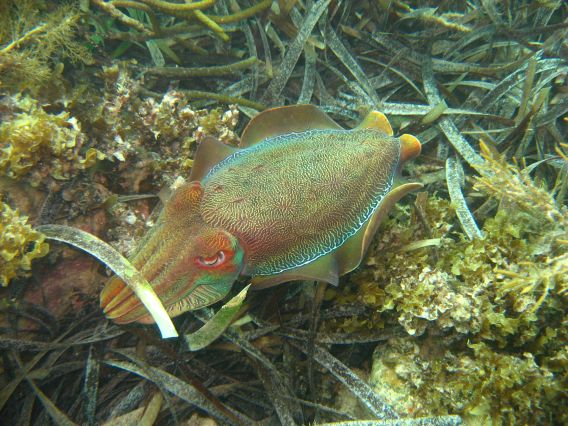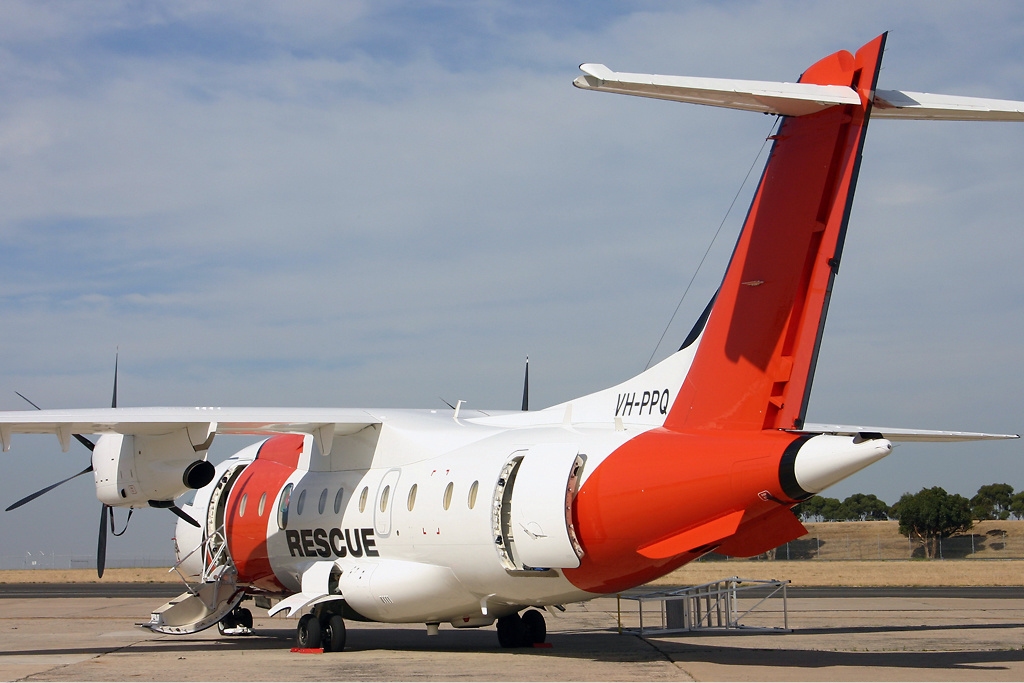|
Point Lowly Lighthouse
The Point Lowly lighthouse was constructed in 1883 to guide ships safely through Spencer Gulf en route to Port Augusta and Port Pirie in South Australia. It was upgraded several times before being deactivated in 1993. It was reactivated in 1995 and is a tourist attraction for the Whyalla area and an icon of the Point Lowly area. History The lighthouse at Point Lowly was constructed in 1883 to guide ships traversing Spencer Gulf, en route to the northern ports of Port Augusta and Port Pirie. The lighthouse and its cottages pre-date the establishment of Whyalla and are the oldest European heritage structures in the Whyalla area. The original tower was 15 metres in height and was made from local sandstone. The optical apparatus had an eight side catadioptric lens which revolved once every 80 seconds and gave a 2-second flash every 10 seconds. Supplies were brought to the lighthouse by boat from Port Pirie on the eastern shore of Spencer Gulf. The structure was raised by 7.6 met ... [...More Info...] [...Related Items...] OR: [Wikipedia] [Google] [Baidu] |
List Of Lighthouses In Australia
This is a list of lighthouses and lightvessels in Australia. Australia has a coastline of , with over 350 lighthouses and navigational aids around the Australian coastline, and a single inland lighthouse, the Point Malcolm lighthouse. The first lighthouse was Macquarie Lighthouse, which was lit in 1793 as a tripod mounted wood and coal fired beacon. The last staffed lighthouse was Maatsuyker Island Lighthouse, off the south coast of Tasmania, which was automated in 1996. Listing The lighthouses and lightvessels of Australia are listed in the National Geospatial-Intelligence Agency ''List of Lights'' publication 111. They are listed by the United Kingdom Hydrographic Office on volume K of the ''Admiralty List of Lights & Fog Signals''. The '' ARLHS World List of Lights'' lists them with the prefix "AUS". On ''The Lighthouse Directory'', the lighthouses of Australia are listed according to their location: * Coral Sea Islands Territory * New South Wales, including Cape St Georg ... [...More Info...] [...Related Items...] OR: [Wikipedia] [Google] [Baidu] |
Point Lowly
Point Lowly is the tip of a small peninsula north north-east of Whyalla in the Upper Spencer Gulf region of South Australia. The wider peninsula is shared by a combination of defence, industrial, residential, recreational and tourism interests. Port Bonython lies immediately to the north-west and is marked for future industrial expansion, driven by anticipated growth in the State's mining industry. The icons of the peninsula are the historic Point Lowly Lighthouse and the mass breeding aggregation of Australian giant cuttlefish which occurs inshore each winter. Point Lowly was named by Matthew Flinders during explorations in 1802. It also bears the lesser-known alternative name of ''Cap Lafontaine'', given by French explorer Nicolas Baudin during his explorations in the same period. A boat-ramp exists north of the lighthouse for the benefit of commercial aquaculture operations and recreational users. Waters near Point Lowly include several popular grounds for snapper fishi ... [...More Info...] [...Related Items...] OR: [Wikipedia] [Google] [Baidu] |
Register Of The National Estate
The Register of the National Estate was a heritage register that listed natural and cultural heritage places in Australia that was closed in 2007. Phasing out began in 2003, when the Australian National Heritage List and the Commonwealth Heritage List were created and by 2007 the Register had been replaced by these and various state and territory heritage registers. Places listed on the Register remain in a non-statutory archive and are still able to be viewed via the National Heritage Database. History The register was initially compiled between 1976 and 2003 by the Australian Heritage Commission, after which the register was maintained by the Australian Heritage Council. 13,000 places were listed. The expression "national estate" was first used by the British architect Clough Williams-Ellis, and reached Australia in the 1970s.Heritage of Australia, pp. 9–13 It was incorporated into the ''Australian Heritage Commission Act 1975'' and was used to describe a colle ... [...More Info...] [...Related Items...] OR: [Wikipedia] [Google] [Baidu] |
Lighthouses Completed In 1883
A lighthouse is a tower, building, or other type of physical structure designed to emit light from a system of lamps and lenses and to serve as a beacon for navigational aid, for maritime pilots at sea or on inland waterways. Lighthouses mark dangerous coastlines, hazardous shoals, reefs, rocks, and safe entries to harbors; they also assist in aerial navigation. Once widely used, the number of operational lighthouses has declined due to the expense of maintenance and has become uneconomical since the advent of much cheaper, more sophisticated and effective electronic navigational systems. History Ancient lighthouses Before the development of clearly defined ports, mariners were guided by fires built on hilltops. Since elevating the fire would improve the visibility, placing the fire on a platform became a practice that led to the development of the lighthouse. In antiquity, the lighthouse functioned more as an entrance marker to ports than as a warning signal for reefs and ... [...More Info...] [...Related Items...] OR: [Wikipedia] [Google] [Baidu] |
Save Point Lowly
Save Point Lowly is a community action group based in Whyalla, South Australia. The group was formed circa 2008 to present an alternative vision for the future of the Point Lowly area north-west of Whyalla and resist plans for heavy industrialization. The group aspired to raising the profile of the Point Lowly area, including the giant Australian cuttlefish aggregation, which the group believes is under threat from a number of industrial proposals including: a seawater desalination plant for BHP Billiton's Olympic Dam mine, a diesel distribution hub, a technical ammonium nitrate plant (which has since been abandoned) and an iron ore export facility. Collectively these development have been referred to by the Government of South Australia as the Port Bonython Minerals Precinct. The group's spokesperson and chairman is Andrew Melville-Smith who is a practising veterinarian and resident of Whyalla. Activity The group has been engaged in petitioning, disseminating information to t ... [...More Info...] [...Related Items...] OR: [Wikipedia] [Google] [Baidu] |
South Australian Heritage Register
The South Australian Heritage Register, also known as the SA Heritage Register, is a statutory register of historic places in South Australia. It extends legal protection regarding demolition and development under the ''Heritage Places Act 1993''. It is administered by the South Australian Heritage Council. As a result of the progressive abolition of the Register of the National Estate The Register of the National Estate was a heritage register that listed natural and cultural heritage places in Australia that was closed in 2007. Phasing out began in 2003, when the Australian National Heritage List and the Commonwealth Heritag ... during the 2000s and the devolution of responsibility for state-significant heritage to state governments, it is now the primary statutory protection for state-level heritage in South Australia. References External linksOnline Heritage Databases {{Heritage registers of Australia Heritage registers in Australia ... [...More Info...] [...Related Items...] OR: [Wikipedia] [Google] [Baidu] |
Australian Maritime Safety Authority
Australian Maritime Safety Authority (AMSA) is an Australian statutory authority responsible for the regulation and safety oversight of Australia's shipping fleet and management of Australia's international maritime obligations. The authority has jurisdiction over Australia's exclusive economic zone which covers an area of . AMSA maintains Australia's shipping registries: the generalAMSARegister a vessel/ref> and the international shipping registers.AMSAAustralian international shipping register/ref> AMSA was established in 1990 under the ''Australian Maritime Safety Authority Act 1990'' and governed by the ''Commonwealth Authorities and Companies Act 1997''. AMSA is an agency within the Department of Infrastructure and Transport. Directors are appointed by the minister. The international treaties which AMSA administers include the ''Navigation Act 2012'' and the ''Protection of the Sea (Prevention of Pollution from Ships) Act 1983''. Organised sea rescue in Australia was ... [...More Info...] [...Related Items...] OR: [Wikipedia] [Google] [Baidu] |
Whyalla
Whyalla was founded as "Hummocks Hill", and was known by that name until 1916. It is the fourth most populous city in the Australian state of South Australia after Adelaide, Mount Gambier and Gawler and along with Port Pirie and Port Augusta is one of the three towns to make up the Iron Triangle. As of June 2018, Whyalla had an urban population of 21,742, Estimated resident population, 30 June 2018. having declined at an average annual rate of -0.75% year-over-year over the preceding five years. It is a seaport located on the east coast of the Eyre Peninsula and is known as the "Steel City" due to its integrated Whyalla Steelworks, steelworks and shipbuilding heritage. The port of Whyalla has been exporting iron ore since 1903. Description The city consists of an urban area bounded to the north by the railway to the mining town of Iron Knob, to the east by Spencer Gulf, and to the south by the Lincoln Highway, South Australia, Lincoln Highway. The urban area consists of the fo ... [...More Info...] [...Related Items...] OR: [Wikipedia] [Google] [Baidu] |
Eyre Peninsula
The Eyre Peninsula is a triangular peninsula in South Australia. It is bounded by the Spencer Gulf on the east, the Great Australian Bight on the west, and the Gawler Ranges to the north. Originally called Eyre’s Peninsula, it was named after explorer Edward John Eyre, who explored parts of the peninsula in 1839–41. The coastline was first charted by the expeditions of Matthew Flinders in 1801–02 and French explorer Nicolas Baudin around the same time. Flinders also named the nearby Yorke Peninsula, Yorke’s Peninsula and Spencer Gulf, Spencer’s Gulph on the same voyage. The peninsula's economy is primarily agricultural, with growing aquaculture, mining, and tourism sectors. The main towns are Port Lincoln in the south, Whyalla and Port Augusta in the northeast, and Ceduna, South Australia, Ceduna in the northwest. Port Lincoln (''Galinyala'' in Barngarla language, Barngarla), Whyalla and Port Augusta (''Goordnada'') are part of the Barngarla Aboriginal country. Cedu ... [...More Info...] [...Related Items...] OR: [Wikipedia] [Google] [Baidu] |
Port Pirie
Port Pirie is a small city on the east coast of the Spencer Gulf in South Australia, north of the state capital, Adelaide. The city has an expansive history which dates back to 1845. Port Pirie was the first proclaimed regional city in South Australia and is currently the second most important and second busiest port in the state. The city was founded in 1845, and at the 2016 Census had a population of 15,343. Port Pirie is the eighth most populous city in South Australia after Adelaide, Mount Gambier, Gawler, Mount Barker, Whyalla, Murray Bridge and Port Lincoln. The city's economy is dominated by one of the world's largest lead smelters,Port Pirie's lead smelter at risk of breaching licence to ... [...More Info...] [...Related Items...] OR: [Wikipedia] [Google] [Baidu] |
Port Augusta, South Australia
Port Augusta is a small city in South Australia. Formerly a seaport, it is now a road traffic and railway junction city mainly located on the east coast of the Spencer Gulf immediately south of the gulf's head and about north of the state capital, Adelaide. The suburb of Port Augusta West is located on the west side of the gulf on the Eyre Peninsula. Other major industries included, up until the mid-2010s, electricity generation. At June 2018, the estimated urban population was 13,799, Estimated resident population, 30 June 2018. having declined at an average annual rate of -0.53% over the preceding five years. Description The city consists of an urban area extending along the Augusta and Eyre Highways from the coastal plain on the west side of the Flinders Ranges in the east across Spencer Gulf to Eyre Peninsula in the west. The urban area consists of the suburbs, from east to west, of Port Augusta and Davenport (on the eastern side of Spencer Gulf), and Port Augusta West on ... [...More Info...] [...Related Items...] OR: [Wikipedia] [Google] [Baidu] |





